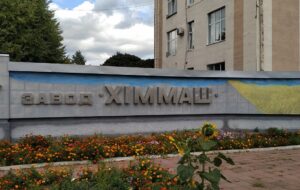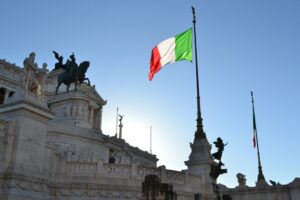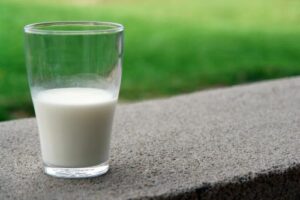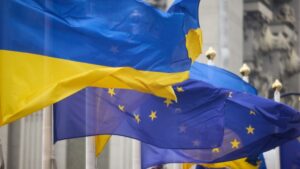
Korosten Chemical Engineering Plant JSC (Khimmash, Zhytomyr region) ended 2024 with a net profit of UAH 4.22 million, which is 2.4 times less than the same figure for 2023 (UAH 10.18 million), according to the information on the agenda of the general shareholders’ meetings for 2023 and 2024.
According to the draft resolutions of the meeting scheduled for April 29, it is planned to allocate 5% of net profit for each year (UAH 0.51 million for 2023 and UAH 0.21 million for 2024, respectively) to the company’s reserve fund, while UAH 9.67 million and UAH 4 million will be used to cover losses of previous years.
The shareholders also plan to approve the company’s financial and economic results for two years, reports of the management bodies, and give preliminary consent to a number of transactions.
Founded in 1949, Khimmash specializes in the manufacture of heat exchangers, condensers, refrigerators and evaporators for the oil refining, petrochemical and chemical industries, air cooling units, refrigeration and cryogenic equipment, and heating boilers.
According to the company’s website, in 2024, the plant increased production by 53.5% and exported almost 50% of its products.
“The main task in 2025 is to maintain and increase the achieved result. We plan to gradually upgrade and modernize industrial equipment and expand production capacity. A significant amount of investment will be directed to increase the construction of solar power plants,” the website says.
According to the company, in the fall of 2024, it launched the second stage of its own solar power plant, and currently has two substations with a total capacity of 420 kW, which allows it to fully provide electricity for the production cycle.
Helios Strategia (Dnipro) was the contractor for the construction of the solar power plant. The plants are currently operating on a backup basis only.
According to the National Securities and Stock Market Commission, as of the third quarter of 2024, more than 98% of the authorized capital of Khimmash JSC belongs to the local Tis-Company LLC, and the ultimate beneficiary, according to the Clarity Project, is entrepreneur Motrona Tyshchenko, who, in particular, is the beneficiary of the Zhytomyrski Lasoshchi Trading House.
In 2024, the Korosten-based Khimmash plant increased its revenue by 17% compared to 2023, to UAH 167 million.

Consumer prices in Italy, harmonized with European Union standards, rose by 2.1% year-on-year in March, according to preliminary data from the Istat statistical agency. The rate of increase accelerated from 1.7% in February and became the highest in a year and a half (since September 2023).
Analysts on average had forecast a 1.9% rise this month, according to Trading Economics,
The increase in consumer prices in March compared to the previous month amounted to 1.6% (after an increase of 0.1% in February).
Consumer prices in Italy, calculated according to local standards, increased by 2% yoy (also the highest in a year and a half) after rising by 1.6% in February.
Energy prices went up by 1.3%, tobacco products by 4.6%, food by 3.3%, and communication services by 0.8%.
Core inflation (excluding volatile energy and food prices) amounted to 1.7% in annual terms this month.
http://relocation.com.ua/v-italii-v-berezni-pryskorylasia-inflia/

Average monthly milk prices in February 2025 continued to decline and after a peak in December 2024 fell to 17.3 UAH/kg, and as of the end of the month dropped to 17 UAH/kg, according to the Union of Dairy Enterprises of Ukraine (UDEP).
According to the report, the price level of February 2025 was 13.5% lower than the price level of December 2024 and 16.5% higher than the price level of February 2024.
At the same time, the average price for milk in February 2025, expressed in euros (for the domestic quality basis), amounted to almost EUR 40/100 kg – against EUR 45.7 in December 2024 and EUR 42.7 in January 2025.
In February 2025, the average price, expressed in euros and converted to the euro basis, fell below EUR47/100 kg, down from EUR53.7 in December 2024 and EUR50.2 in January 2025.
The price level in February 2025 (in terms of EUR) was 13% lower than the price level in December 2024 and 10% higher than the price level in February 2024.
The ratio between the price levels in Ukraine and the EU and Polish averages in February 2025 was 87.5% to the EU average (in November-December 2024 it was over 98%), and 87% to the Polish average.
According to experts, the respective ratios have “rolled back” to the level of September 2024, and the competitiveness of domestic dairy products increased in February 2025.
According to the UMPA, the situation with milk prices in other regions of the world is as follows: in the United States and Brazil, the price increased to EUR 51 and EUR 42.5, respectively, in New Zealand, prices stabilized at EUR 41.5.

The President of the National Assembly of the Republic of Slovenia Urška Klakočar Zupančič has arrived in Ukraine, the Embassy of Slovenia in Ukraine reports.
“The President of the National Assembly of the Republic of Slovenia, Urška Klakočar Zupančič, has arrived in Ukraine on a visit to take part in the parliamentary summit,” the Embassy said in a statement on social media platform X on Monday.
Upon her arrival at the railway station in Kyiv, she was met by the Speaker of the Verkhovna Rada of Ukraine Ruslan Stefanchuk.

The office real estate market in Belgrade is expected to show steady growth in 2024, driven by a robust economy and increasing demand for quality office space. Demand for modern office space continues to exceed supply, which stimulates the active construction of new business centers and renovation of existing buildings.
Rental prices in different parts of Belgrade:
Trends and forecast until the end of 2025:
Demand for office space in Belgrade remains high, especially from foreign companies and banks. Active construction of new business centers is observed in the central districts and New Belgrade, but the supply still does not fully meet the market needs.
Rental rates are expected to remain stable until the end of 2025, with possible adjustments in the most sought-after locations. Infrastructure development and commissioning of new office space will continue, which may somewhat reduce the supply shortage in the market.
Source: https://t.me/relocationrs/725

The opportunity to vote in elections through active registration may appear for Ukrainians abroad after the war, since only a small part of those who left are on consular registration, said the head of the Central Election Commission Oleg Didenko.
“There (abroad) now millions of Ukrainian citizens, and, according to the consular registration, there are less than 400 thousand. This clearly does not correspond to reality. For citizens abroad to be able to vote, they have to identify themselves in some way: to say their electoral addresses or place of voting. For them, we are now preparing a proposal to introduce another mechanism. If the Verkhovna Rada supports our idea, there will be a third opportunity to vote – the so-called active registration,” Didenko told Ukrayinska Pravda in an interview published on Monday.
He noted that overseas voting even in peacetime is a very difficult task because polling stations are few and far from voters. “And now the number of voters abroad has increased by a factor of 10, if not more. We have estimates that there are somewhere between 5-6 million voters abroad. We do not understand, of course, what migration will be in the post-war period, this figure may decrease, because some part of citizens will return. But nevertheless, we are talking about millions of people. It is clear that our 102 polling stations, which now exist on the territory of embassies and consulates, can’t solve the problem,” said the head of the CEC.
Therefore, according to Didenko, three groups have been created to work out possible changes to the legislation and one of them is focused on voting abroad.
“All agreed on such an option as the creation of additional polling stations outside embassies and consulates. And related to this is precisely the institution of so-called active registration. That is, the idea is that our citizens some time before the start of the electoral process can submit an application, physically to the embassy or online, that they are abroad and want to vote there and there. And already on the basis of these applications and additional information about the places of concentration of Ukrainians, our diplomatic missions will be able to offer the Foreign Ministry and us to create additional polling stations,” he said.
However, according to the CEC head, this requires changes in the legislation, as the law currently provides for the possibility to set up polling stations only on the territory of embassies and consulates.
Regarding internally displaced persons, he noted that there are already procedures when a voter can change the electoral address to the place of his actual residence. “This possibility was introduced with the adoption of the Electoral Code, and in 2020 in local elections it has already been implemented. Or, if we are talking about state-wide elections, a person can change the place of voting without changing the voting address. We are now working on proposals to the law on post-war elections and will propose to the Verkhovna Rada to further simplify and expand these opportunities,” Didenko said.
Also, he said, Ukraine needs much more time to prepare post-war elections than is now provided, and “the more time there is, the better the electoral process can be organized, the less time – the worse, respectively.”
“We have very many challenges. We need to pass a law on the peculiarities of post-war elections. And depending on what that law will provide, it will be possible to talk more specifically about the timing,” Didenko added.